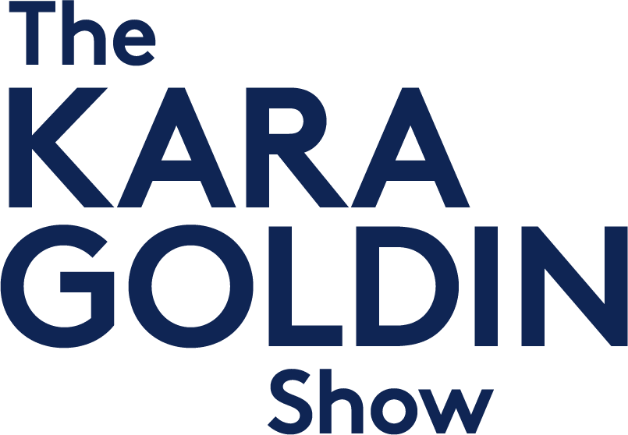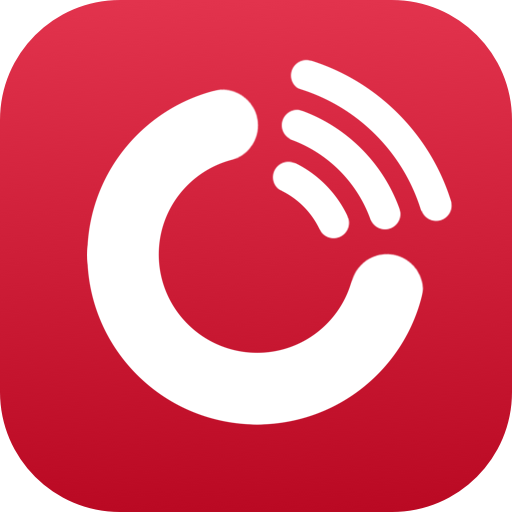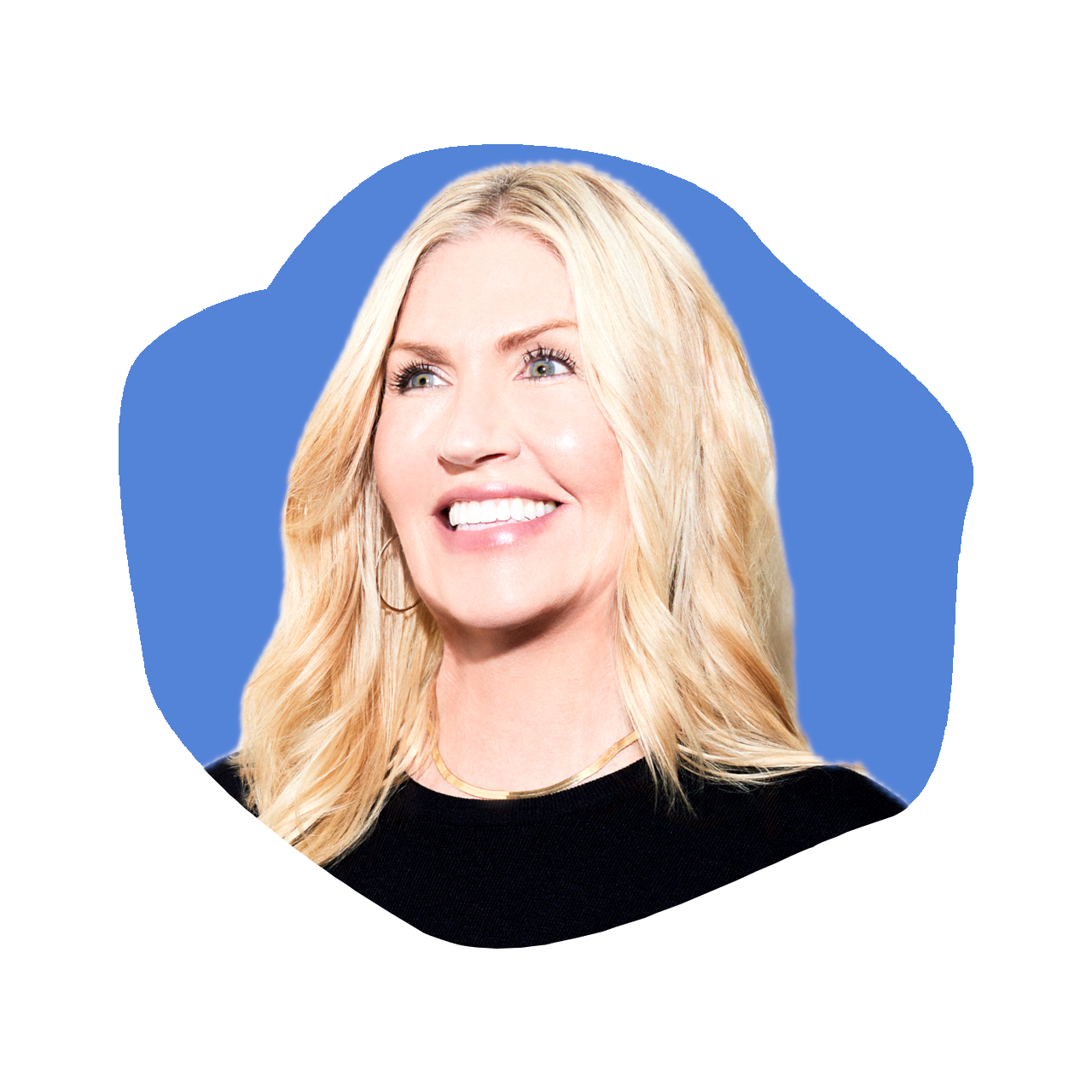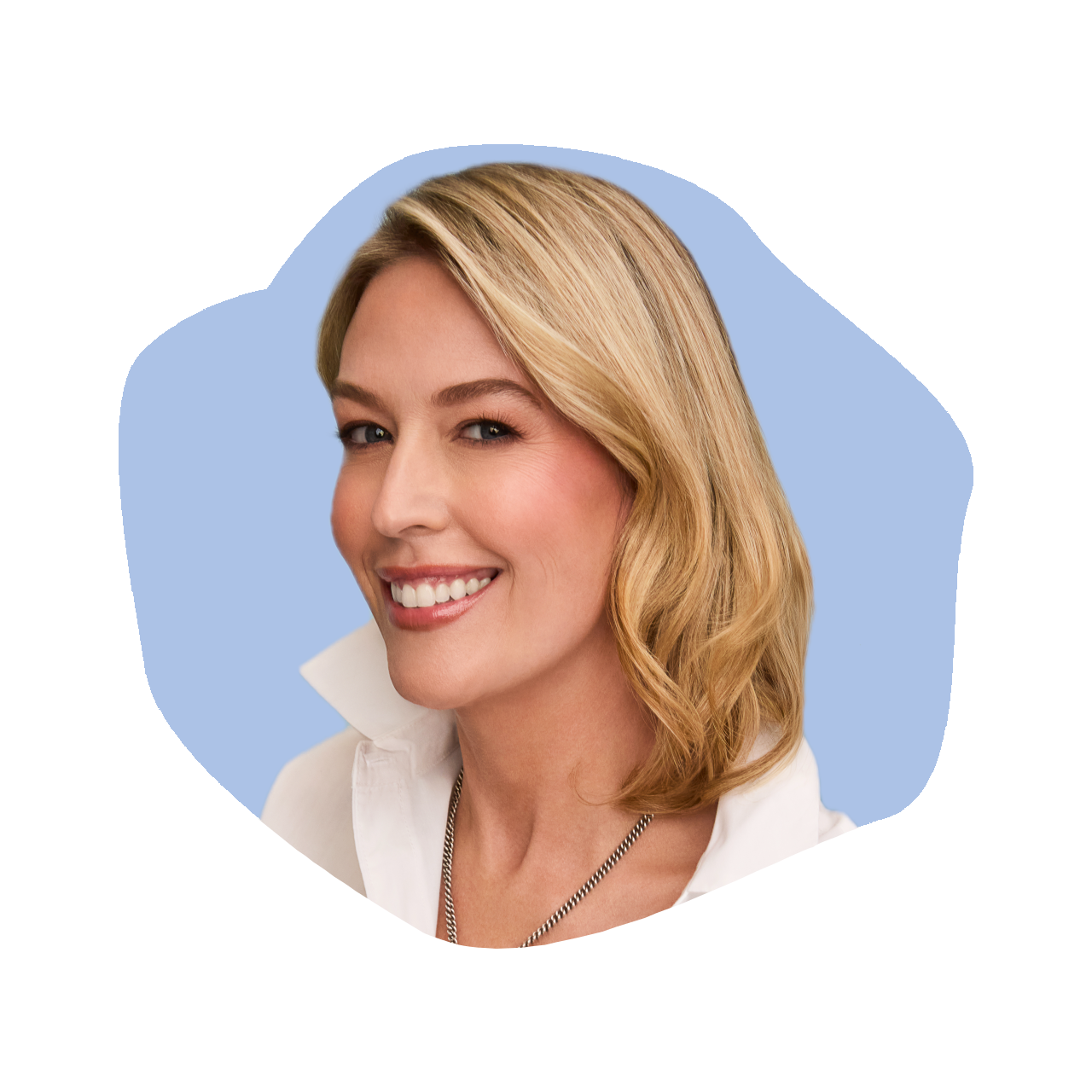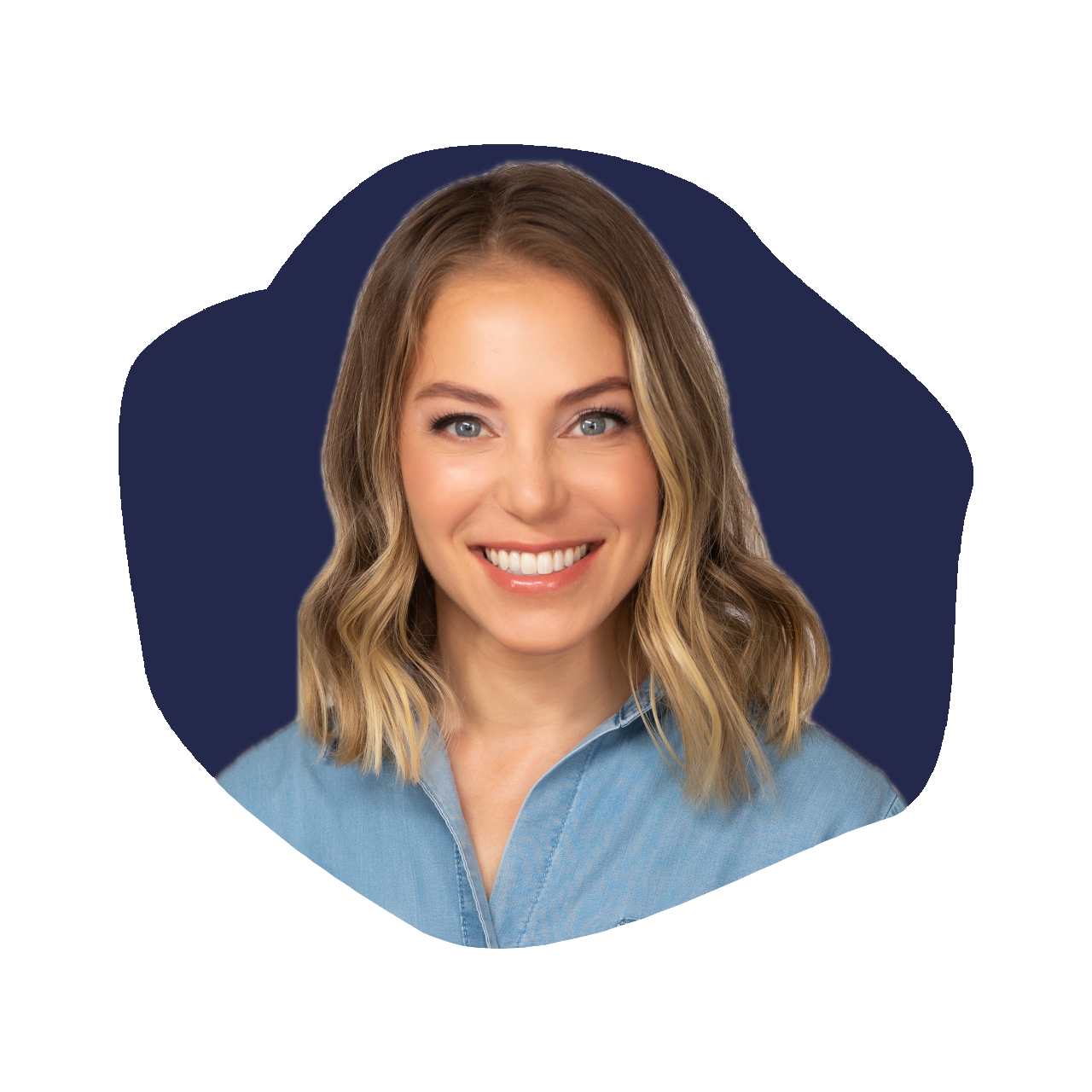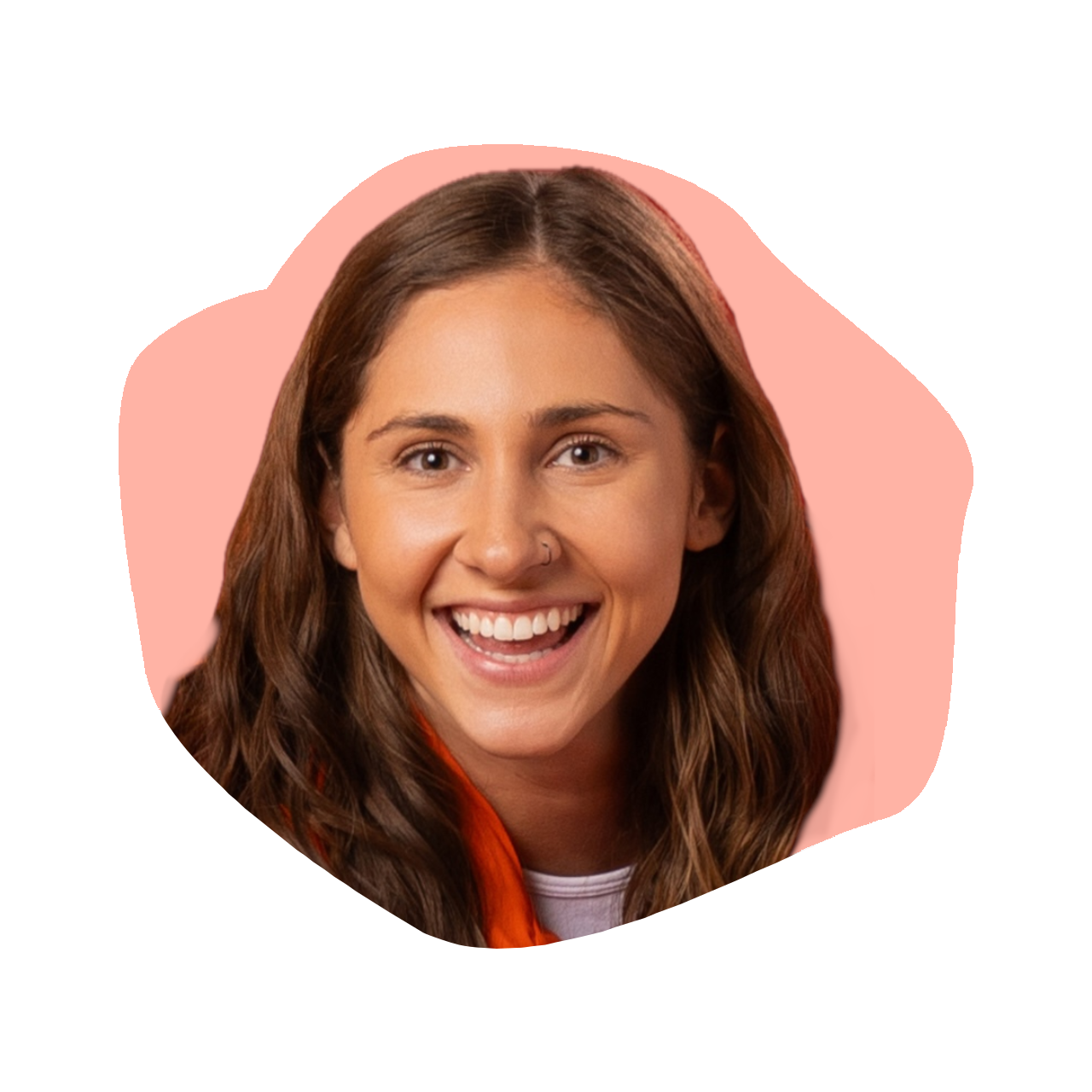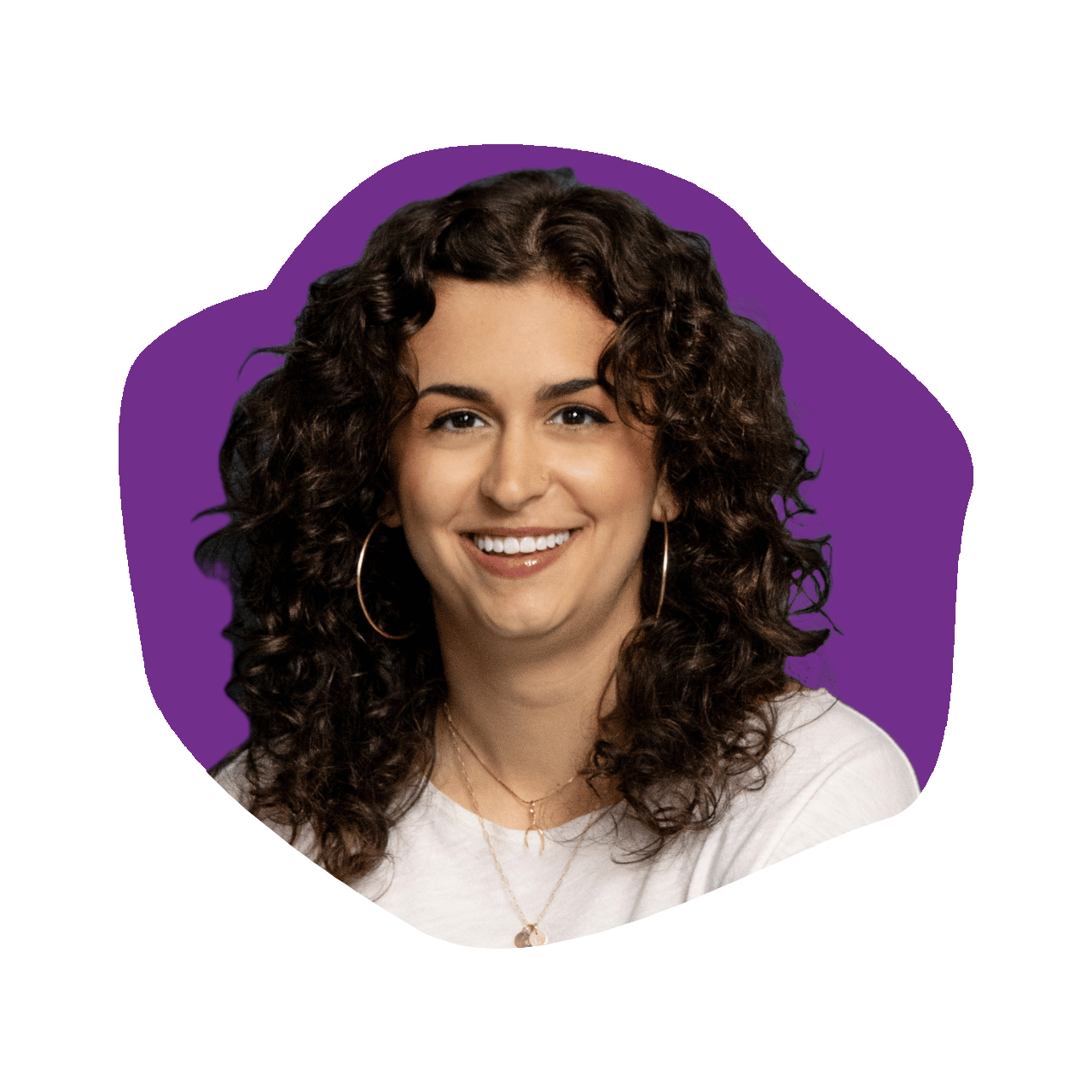Kegan Fisher: Co-Founder & CEO of Frank Darling
Episode 715
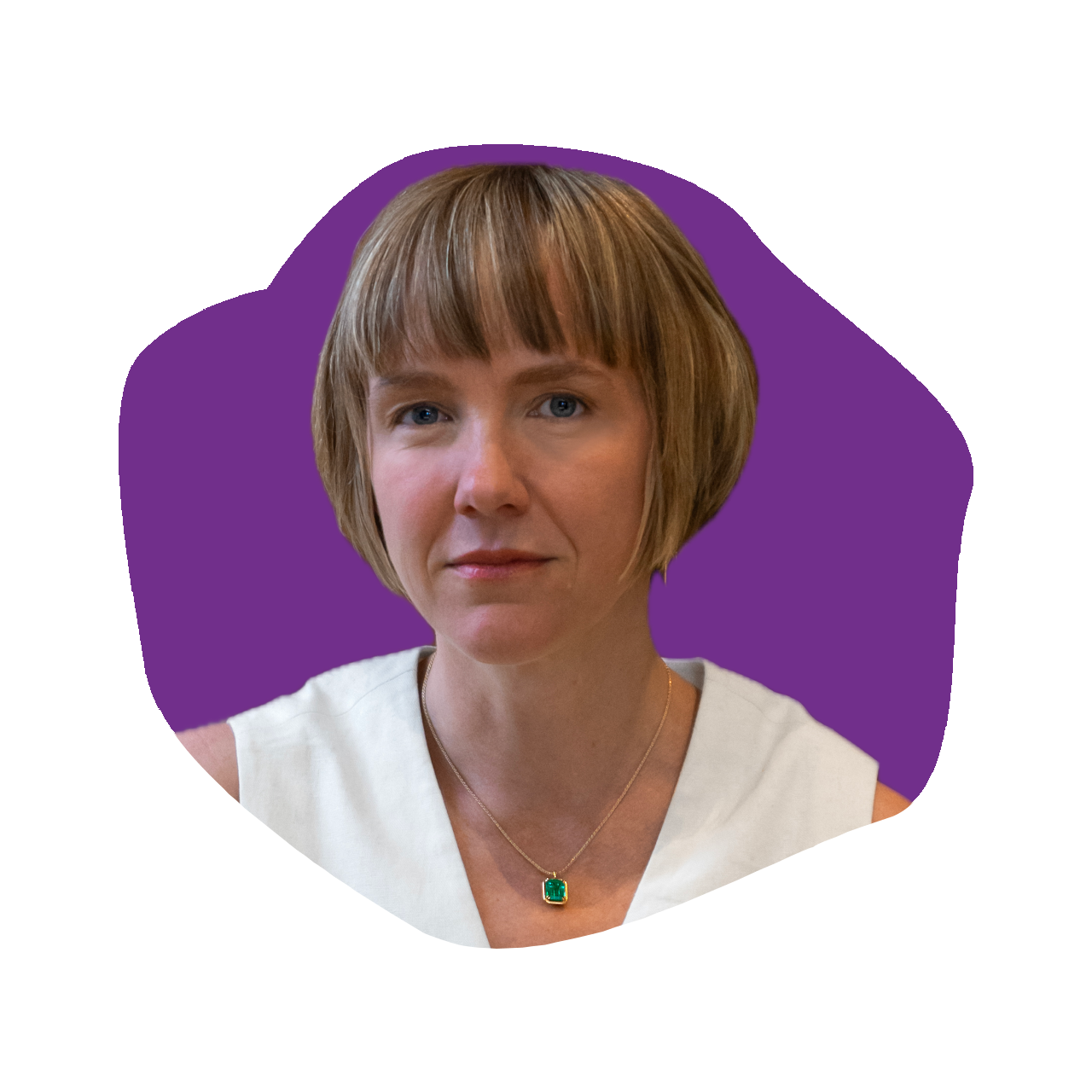
On this episode of The Kara Goldin Show, I sit down with Kegan Fisher, Co-Founder and CEO of Frank Darling—the fine jewelry brand reimagining the engagement ring experience with modern design, ethical sourcing, and custom craftsmanship. What began in a Brooklyn apartment in 2017 has grown into a nationally recognized brand with showrooms across New York, Los Angeles, San Francisco, Boston, and Washington, D.C.—and even more to come.
In our conversation, Kegan shares how her background in industrial design and advanced manufacturing helped shape Frank Darling’s signature customer-first experience. From digital ring quizzes and try-at-home kits to one-on-one design consultations and local artisan craftsmanship, Frank Darling makes designing your dream ring seamless, personal, and transparent. We also dive into how the brand is expanding into other fine jewelry categories, why ethical sourcing and local production matter more than ever, and what it takes to innovate in a legacy-driven industry.
If you’re into entrepreneurship, the future of retail, or just love hearing how great brands are built—this episode is one you won’t want to miss. Now on The Kara Goldin Show.
Resources from
this episode:
Enjoying this episode of #TheKaraGoldinShow? Let Kara know by clicking on the links below and sending her a quick shout-out on social!
Follow Kara on LinkedIn – Instagram – X – Facebook – TikTok – YouTube – Threads
Have a question for Kara about one of our episodes? Reach out to Kara directly at [email protected]
To learn more about Kegan Fisher and Frank Darling:
https://www.instagram.com/frankdarling
https://www.instagram.com/kegan3d
https://www.linkedin.com/in/kegan-fisher-22747625/
https://www.linkedin.com/company/frank-darling
https://www.frankdarling.com
Transcript
Kara Goldin 0:00
I am unwilling to give up that I will start over from scratch as many times as it takes to get where I want to be. I want to be you. Just want to make sure you will get knocked down. But just make sure you don’t get knocked out, knocked out. So your only choice should be go focus on what you can control. Control. Control. Hi everyone, and welcome to the Kara Goldin show. Join me each week for inspiring conversations with some of the world’s greatest leaders. We’ll talk with founders, entrepreneurs, CEOs and really, some of the most interesting people of our time. Can’t wait to get started. Let’s go. Let’s go. Hi everyone, and welcome back to the Kara Goldin show. So excited to have our next guest here. I’m a new fan. Fully admit, I had not heard of this incredible brand before, and was introduced to it, and boy, am I such a huge fan. So Kegan Fisher is the co founder and CEO of Frank Darling, and it is a modern fine jewelry brand known for its custom designed engagement rings, ethical sourcing and design forward pieces. So not just engagement rings that blend timeless elegance with today’s expectations. Love it. Love it. And since launching in 2017 with her co founder, Jeff Smith, Frank Darling, has grown into a national destination for discerning consumers, with showrooms across the US. We’ll get into that and how they operate overall, which is really interesting. But I can’t wait to hear more about Kegan’s background in industrial design and how that has helped her to build a smarter, more personal jewelry experience. And without further ado, welcome so excited to to finally meet you and have you here. And really, really excited.
Kegan Fisher 2:09
Hey Kara, thank you so much for having me. I’m super excited to be on the show. So the I should note also Jeff, my co founder, is also my husband, so we are a couple that started the brand together, and we’ve been working together. I think this is the third company now. So we were sort of coworkers for or we were coworkers first and a couple later. So that’s definitely, I think, informed a lot of thinking that went into the beginning of the brand.
Kara Goldin 2:36
I love it. So let’s start at the beginning. What inspired you and Jeff, you’ve, as you just said, You’re a serial entrepreneur, you’ve done other companies together. But what inspired you to launch? Frank Darling,
Kegan Fisher 2:51
yeah, absolutely. So, you know, at the beginning, obviously, like I mentioned that we, you know, were a couple, and so, you know, we’ve, we’ve looked at the category ourselves, and I think the more that we looked at the category, the more we saw this sort of bifurcated market, where on one side you had these very old luxury jewelry brands like Tiffany and Harry Winston and graph, but just felt like totally out of touch with, like, the younger consumer. And like I as a shopper, like, yeah, maybe I’ll go to browse for fun, but I’m certainly like, not gonna go to shop there. It just doesn’t feel accessible to me. And it also doesn’t like, make the type of jewelry that like maybe I would want to buy. And then on the other side of things that you had these, like, huge online sort of legacy.com, you know, diamond jewelry retailers, the blue Niles and the brilliant Earths and the James Allen of the world, which felt like, you know, you could sort of have a better experience buying a $20 toothbrush online, then you could buying, you know, a diamond engagement ring. And it just felt like these companies and these platforms on the, you know, on the E comm side, they hadn’t really evolved with the times. They felt very dated. They felt like they’d sort of like survived the.com but, but hadn’t really, like evolved since then. And meanwhile, you had this whole wave of like consumer brands happening, and nothing was happening in the engagement space. So, you know, to us, that felt like it was a really interesting opportunity from a market standpoint. And then on top of that, we felt like they were catering mostly to male shoppers that, like the rise of lab grown diamonds was super interesting. Both Jeff and I have a background in 3d printing and technology. And so the idea that you could, you know, quote, unquote, 3d print diamonds was awesome, and something that we were just like, super excited about. And I think beyond that, we saw that the way that customers were shopping had just completely changed. And the market had moved from this idea where you had, you know, usually a traditionally male buyer that was buying something in secret for a surprise proposal. And then there was sort of this, this engagement that happened after the fact, and that had given way to like a much more sort of fluid customer journey, in which now you have a couple that shopping together. They’re looking to customize the piece. They’re looking for ways to make it personal and special. And yes, it’s about the diamond. Let’s face it, like diamonds are pretty but it’s also a. Like the piece of jewelry and what it means to them, and felt like nobody was really speaking to that customer, and that the, you know, the brands that you saw online, like they just felt so like, boring and beige. And I don’t know there was this, like, pop up on this 1e comm site that I saw that was like, get her what she wants. And I was like, Well, what if I want to buy myself what I want? And it just, you know, I just felt like it was really ripe for disruption and and that was the beginning. And also, I think that we felt like we were naturally, like came from backgrounds that that would be good at disrupting it. We both have backgrounds in art. I studied industrial design, Jeff studied art history. We both got into tech, and sort of had, like, pretty long careers in the tech industry. And, you know, we wanted to get back to design and art and do something that was like more visual and exciting again, but, but yeah, and it felt like a really interesting category to do that.
Kara Goldin 5:52
So your background in industrial design and advanced manufacturing is super unique to especially anybody who’s working in the fine jewelry industry. So how did that background, I guess, really help you to do what you’re doing at Frank? Darling,
Kegan Fisher 6:11
yeah, so I think I’ve always been really interested in, how do you do custom at scale? That was sort of, that’s been the thread, kind of, in all the careers that are all the companies that I’ve worked at over my career, jewelry is actually, like, a really interesting category for that, especially the engagement category, because it’s all about like, how do you make, like, one thing and make it custom and then do something entirely different the next time? So we, you know, obviously, I know a lot about 3d printing, so we immediately, like, integrated that into our manufacturing process. What that means is, like, everything is made to order, as opposed to, like, a lot of brands in the fine jewelry category, where maybe they’re holding stock and you’re investing in that stock, or they’re sort of like holding components and they’re putting those together. What we’re doing is worth making a CAD model, worthy printing a model like of that CAD file, and then we’re putting that into production and casting that single item. What that means is that, like, there’s no added cost for us to do customization. It’s built into our process from day one. So it means that, like, we can basically, like, make anything. So when customers come to us and they say, Hey, I like this ring from your collection, but like, make it with a square band, or add double claw prongs, or can I get side stones? Like, the answer is always yes. And when they they think that it’s going to be a lot more expensive because they go to these other jewelers. These other jewelers, and those jewelers tell them that it’s going to be way more expensive. And that’s because, like those other jewelers, they’re using like, models they already have, or they’re selling stuff they have in the case, or they’re like, outsourcing the design, or they’re trying to find something similar. Whereas we’re literally, like, asking what the customer wants. We’re making, like, a physical sketch of it. We’re actually making the CAD model, and then we’re deeply printing that model, and we go as far as, if they want, they can order, like, a 3d printed sample of the ring to try it on before we actually make it, which I think for a lot of people, is really helpful, because you’re going to be wearing this ring for the rest of your life, like, and there’s, there’s a lot of fear and, like, uncertainty, and people are nervous. And so the idea that you could just, like, test drive it and make sure that you like the stone and the height and all of that, you know, it feels really important. And I think it’s, you know, something you have across us that people really enjoy.
Kara Goldin 8:08
So it’s one thing to have this thought that an industry needs to be disrupted, or you’re looking for a company that does this, but then it takes another thought process, I guess a lot of steps along the way to actually launch a company around it. So what I’m saying it very, very nicely and thoughtfully, I guess, because there’s a lot of work that goes into actually going and committing to this. So what was the first product that you launched with, and how long did it take from the time you said, Okay, we’re gonna go do this, to actually creating that?
Kegan Fisher 8:53
Oh, man, it was like, and diamonds also, there’s like, a suit, like, a really steep learning curve. Like, the diamond industry is extremely insular, and it doesn’t, like, there’s so much to learn, and it takes so much time. So I think we started thinking of the idea in 2017 that’s when we were in San Francisco. We were sort of toying with the idea about, like, how it might be interesting to start something in the fine jewelry category. And we’re like, we should probably, like, read some Bain reports about, like, the market. And, you know, I think over, over the course of, like, the next few months, like we realized there’s a category, you know, the that we were super interested in. From there, we probably spent a good year, like, trying and failing to raise venture funding. I mean, it was brutal, like, we just assumed we were definitely going to raise venture because our last company was venture backed. But this category, like, the way the unit economics work, and the way the sort of customer purchasing cycle works, it’s just it’s so different from the traditional D to C model that I think that we had a lot of, like, just a really hard time articulating that to, you know, in fundraising process, when people are sort of wanting to put it in the box, of like, okay, this is what consumer looks like. This is what recurring revenue looks like, things like that. So a. Uh, spent about a year doing that. Didn’t get anywhere. Um, finally raised a very small pre seed round. Actually met with, like, one of our very, very early pre seed investors the other day, who he was just like, he was an angel. And we met him at like, this hotel in um, in Oakland. He was going to, like, a baseball game or something. And he was just like, How much money do you need? And I was like, Oh no, 50k and he was like, you wrote us a check for 50k thank you so much. I have a photo of that check, like, to date, but in that that was like, we ended up raising only, I think, about, like, 300 maybe 50k total, and that was it for the whole company. And we bootstrapped since then. And I’m so so glad, in retrospect, that we have, like, decided to bootstrap and not gone down the venture path for a variety of reasons. I don’t think that the brand would be as successful, and I don’t think it would be growing as thoughtfully as it has grown and had we gone down the venture path. So that was definitely a blessing in disguise. Anyway. So in 2019 we launched, and 2019 was like radio silence. We launched with about 20 products, 20 ring designs. We had hired a jewel jewelry designer would come out of Tiffany. She was the one of the Tiffany design directors to design the original collection. We still have a few of those rings in the collection, but almost all of them have now been redesigned from like, you know, customer insights that we we’ve learned along the way. And we had our try at home kit, which was like a try at home all at Warby Parker sort of kit, where people could order three samples, they could tie them at home for a week. It’s a free service, and then they send them back to us. And we still do the try at home program. And it’s super successful. And during COVID, especially on and it was, like, wildly successful, because people love to be able, obviously, to try the rings on at home. And I think there’s something nice about, like, I don’t know, when you go engagement shopping, it’s like, this sales, it’s an assisted sales experience because of the value of the objects you’re looking at, which can be really uncomfortable for like, a new shopper. And so the idea that you could just start at home with your partner on the couch, I think feels really, really comforting. But, but anyways, go back to 2019 so it was basically like, it was horrible. We we probably those first, first six months in market. I mean, I don’t know that we sold more than 40k at the time, we had, like, just moved back to Brooklyn. We were to launch the brand. Obviously, we hadn’t taken a salary, I think, in two years. So it was like, everything we had, we were self we’d run out of capital at that point. We were just self funding from savings and and also, then we closed on an apartment and in Brooklyn, and I was like, Okay, if we don’t, like, basically, we hadn’t gave ourselves until December, like, when the closing happened. And I was like, if we don’t figure out, like, how to make money by by December, like, we’re gonna have to get jobs. And I really, like, did not want to get a job because I am not employable. Like, I’ve been working for myself my entire adult career, with the exception of, like, two years. So, like, I, like, we had to figure out a way to make it work, and but we had no money, because at the point, like, we had run out of capital, and, you know, we just self funding it. So we started, you know, thinking about, like, how do we do things that don’t scale? I wrote probably, like, 100 blog posts for the website. I would just get up every morning and like, write blog posts that were SEO optimized and try to figure out the start ranking for, you know, keywords that people were searching for. And quickly, we had some breakout successes there that actually still drive a ton of traffic to our website. There was this how not to buy a lab grown diamond article online and that that, like, went wild. And then we did a whole series on how not to do that, do this. And and all those articles performed really well. And so that was exciting, because they started getting traffic, but, like, we still weren’t getting sales, and it was rough. And also we were, like, living in Airbnbs at the time to waiting for this apartment to close. So it was just like, as a really, like, not great, like, time of time of life, Jeff and I were running back and forth from this, like, Airbnb sublet in New Jersey to, like, the diamond district, like, pick up and drop off diamonds. And it was cold, and it was just, like, a really, like, really, not great, couple of months. And then at some point, it was like, October, and we, you know, we were like, we have to figure out, like, how to make this work and how to sell stuff. And I said that people kept requesting rings that we didn’t sell. And so it was like, people wanted to buy rings, but the rings were never in the collection, right? So I was like, Maybe we should just like, start selling, like, whatever people ask for, and let’s just like, do it, and then if we do it and we buy things, then we can modify the collection, but at least we have revenue coming up. And so we built, like, the initial iteration of the ring quiz, and it was basically a type form quiz where people answered 20 Questions and they told us what they were looking for. Were looking for in a ring, and then when I got all those answers, I would literally make a CAD model for them of the ring that they requested with, like, no upfront charge, like no nothing, no strings, like, I just, like, make the CAD model. I don’t even know how to make, like jewelry CAD models, but I figured it out. And they were not the best, but I did it. And overnight, like a like, people started, like, requesting things, so many things that it was like, no longer sustainable for me to like, keep making these CAD models. So we had the switch to like Illustrator, like sketches. And B people started buying things. And we went from like, maybe 10k in revenue in November to over 100k that December. Yeah, which was amazing. So I was like, oh my god, maybe we don’t have to get jobs. I really, really did not want to get a job. And so that was, like, a huge breakthrough. And after that, we just kept doubling, like every month was double sales of the month before, up until March, and COVID hit, and then then COVID hit. And we were just like, okay, you know, this sucks. What’s going to happen? We applied to Y Combinator. We got rejected from Y Combinator. I was like, our sales going to stop overnight. How are we going to, like, do anything? We just pushed through it. And what we found was that you launched the virtual consult model that was really successful. Our try at home program was, was really popular and and those kept, like, building and growing. And I guess the only piece of it that you know, we struggled with was during those sort of, like early months, we were doing this thing where we would, we would book like co working space by the hour, and we’d invite people to come to the co working space to, like, see their diamonds, and that became a problem once COVID started, but pretty soon thereafter, like once we got through that first wave, we got an office, and we started scaling the retail portion of the business as well.
Kara Goldin 16:10
That’s That’s incredible. So when you think about the the core of Frank Darling, it’s very custom, right? What you’re doing for people, but it’s also ethical. Sourcing plays such a huge part of your brand local artisans. Can you talk a little bit about that and things that maybe that’s not even how consumers would necessarily describe you, but it’s something that I’m sure as an as a founder, you care a lot about
Kegan Fisher 16:43
totally I think consumers would describe us as transparent and all to me, like goes back to the same place. There’s so much distrust with the diamond jewelry industry, and there’s so much confusion, and product confusion, sourcing confusion, like marketing confusion, and it’s, it’s really kind of like, wrapped up in that, and the whole sort of ongoing argument between lab grown diamonds and natural diamonds, like, doesn’t help, because it’s just more, you know, more, sort of, like compounding confusion on top of that. So from the beginning, we were like, Let’s just be as transparent as possible. That’s where the name came from. Frank was all about being transparent. And Darlene was like, you know, very like F Scott Fitzgerald, like, you know, darling, the romance portion of it. But, you know, we were like, we’re going to tell our customers everything, like the good, the bad, the ugly. We’re going to let them make up their own mind. We’re going to provide them as much, you know, information as we can. If we don’t have the answers, we’re going to find the information. And it was all about kind of like opening up that box and creating, you know, a space that people felt comfortable in asking the questions that maybe they didn’t even know to ask and could really like, facilitate that dialog with us. So that was a big part of it at the same time, you know, I think one of the beautiful things about made to order, and one of the reasons that I’ve always been so excited about it, like as a manufacturing model, throughout all the different, you know, roles that I’ve had kind of in and around manufacturing is that it is like a zero waste model. So it’s like, you don’t hold any inventory. We have no inventory across any of our showrooms. We don’t make anything until the order is actually placed. And let’s say a proposal falls through, or like, you know, maybe they want a different ring. It all goes backwards. So the gold gets melted down, the diamond gets returned to the supplier, and, you know, it’s like, it’s like, it was never made. And so that’s, I think, from when we think about, like, the future of manufacturing, that’s always been really exciting to me, is like, how do we do manufacturing, especially in, like, the fashion sector, without having all the waste that comes out of it?
Kara Goldin 18:36
Yeah, definitely. So you’ve expanded beyond the original engagement rings. You talked a bit about this, but just to zero in on some of the other things that you do. I have these gorgeous earrings that I have on, and also ring, not an engagement ring, but I like to play around with my wedding ring, engagement rings and wear different rings, but you’ve also gone into tennis bracelets, pendants. So when you think about your company since the beginning, obviously you were super focused on one thing, how has your How has the consumer, sort of expanded your company in terms of you know, have you seen a dramatic shift from being I guess, now that you have so many more consumers that are coming back time and time again, they want more pieces, there’s this trust, I would imagine, that they have with you, that you get it and it’s custom and and, but do You feel like you’re doing more earrings or rings, or what is kind of the biggest shift totally.
Kegan Fisher 19:47
So we, I, we think of ourselves as, like, diamond forward engagement and fine jewelry. So absolutely, like, when you go through, like, the engagement ring sort of process with someone, it’s really emotional, and you form this incredible relationship with a customer. Mean, some, some of the designers on our sales team, like, people send them gifts, they send them photos, they invite them to their weddings. Like, it’s, like, it’s pretty wild, so, and it’s, yeah, it’s really, it’s a wonderful experience that you have with someone, and there’s definitely trust that comes out of it. So I think we started doing those other types of pieces, because people were coming to us and said, I have a wedding coming up. And can you do my earrings? I want to make this, you know, really interesting pair of reversible drops, you know. Or, can you make my necklace? Or I want to get an anniversary present, or push present. We’re having kids, you know. And it’s, it’s really fun also, because you get, like, the highlight reel of, like, your customers lives, and so, you know, you haven’t heard from them in a year, and all out of the blue, they’re like, Hey, we’re having twins, you know. And it’s just like, what can you do? And it’s so awesome. So I think that’s a really fun part, and as naturally, you know, caused us to expand to those other categories right now, engagement is still our biggest, but we do on up like bands, whether it’s like wedding stackable anniversary, just because right hand, like we do a ton of just like diamond forward bands, the trend has definitely moved in that direction. People love to, like, mix and match their stack, and also, like customize with different rings. I think often people find after they get engaged, like, maybe, you know, they don’t want to wear their ring all the time. So it’s nice to have some, like, more casual, you know, bands that, like, also feel fancy, but are, like, more practical from like, a day to day perspective. And so we do a ton of work like that. And then we have tennis bracelets and pendants. The pendants are really fun, because people are often picking out, like, really fun, like, weird stones for that. And going forward, we’re definitely going to be expanding that part of the brand as well, thinking about how we can, kind of like, take a design and collection forward approach to it. Design has always sort of like been at the foundation of what we do, and a lot of our breakout styles have been because we’ve taken a more like, design forward, practical approach to the category. I mean, our clutch engagement ring, which has now been, like, copied by like, pretty much every brand ever, has, like, become a verb at this point. Like, people will literally ask us, Oh, can you clutch it? And meaning, like, can you make it a half bezel? And we’re like, no, that’s our style. Like, so it’s, yeah, it’s sort of funny to see how that’s happened, but it’s because we’re thinking about things like, how do you make it durable? How do you make it low profile? How do you make it not snag and that that, I think, is the industrial design background, where a lot of people approach the jewelry category from a like, let’s make it pretty and like, let’s add decoration, whereas we’re thinking like, how do you create something that’s going to last, that people actually want to wear? Want to wear, and that’s beautiful, and it’s like the trifecta of those three things, not just like another piece.
Kara Goldin 22:28
I bet that’s something that is almost anybody coming into this industry that’s almost has to unlearn, right? It’s something that they would think, because it’s not just about the, you know, look of it, and it’s really about, is this going to be able to wane? Yeah,
Kegan Fisher 22:52
exactly. I think people, you know, it’s interesting, because at my school, at Pratt, like, jewelry and industrial design were different departments, and, like, they were different majors that you could take. And I think a lot of times, people times, people think about jewelry, like ornamentation and and maybe like sculpture, and people think about industrial design as, like product and manufacturing. And the reality is, it’s like, we’re somewhere in between, you know, we’re, we are thinking about them, you know, like products, and that you want to create something that’s durable and beautiful and long lasting, but also, like, you know, have the design and the orientation like and the storytelling and all of that. So that’s been a really fun part. I do think it has differentiated our products. And we’ve always had a focus on low profile, and we’ve really led the market in terms of a lot of like, the low profile settings that we’ve launched that are now, like our best selling styles.
Kara Goldin 23:38
That’s awesome. So social media, obviously, is such a massive part of any brand today, not just in the fine jewelry industry, but also just in pretty much every business. What have you seen in social that has been surprising? I’ll give you an example. We had a beauty brand that is kind of an older beauty brand, like 30 years old, that is really known for seaweed, is kind of their their core, and they, you know, they have the same people for 30 years that are buying this product. But then all of a sudden, they launched a store on Tiktok, and it’s become they have a whole new audience of Gen Z consumers obsessed with this moisturizer that has seaweed in it. And so it’s like, I think it’s really, you know, people are crafting their messaging based on those consumers, and that consumers are varying as well. It’s it’s anyway, I think it’s just fascinating. But what have you seen? Maybe that’s a little surprising or unique for your brand on social?
Kegan Fisher 24:54
I think that the two things that we see is like, well, one people just like, I have an endless app. Appetite for ring photos. We always try to, like, jump on trends and do, like, fun stuff that’s like, maybe like, more viral at the moment, but at the end of the day, like that, stuff that does, like, that performs the best for us is literally like photos of beautiful rings. And like people will just, like, they will scroll and scroll and scroll, and like they just want to, like, look at photos of beautiful rings. So that’s definitely been just like, a huge part of it. And I think on the education side, and going back to, like, transparency, there’s just kind of, like, this endless appetite for content and like learning, like Q and A and things like that. So we’ll do like IG lives or tiktoks, where we’re, like, engaging with the audience and, you know, asking them, you know, what questions they want to answer, what what they would like answers to. And it’s never like, they will just go, it’s never ending. There’s always more questions. And I think that’s because, like, the process has shifted, you know, from sort of like a male led experience to a female led experience, like there’s this entirely new demographic that’s, you know, become the primary purchaser, or at least the primary shopper in category, you know, regardless of who’s buying it. And, yeah, and they want something like, different and custom and unique, and they’re happy to engage and ask all those questions. And so when we, you know, when we think about the team and the brand and all of that, like, from the beginning, it was like, Okay, we want to be like, best like, we want to think about it like we’re best friends with the customer. And you can ask us, like, as many questions as you want, and we’re never going to get sick of you. Will always answer your questions we know, like, slightly you know more than, like, the average person would know. And you can just, like, keep asking. And so people will definitely do that. And it’s really, really fun to hear what people are asking, and it also helps guide, you know, kind of like the decisions that we’re making internally, especially with talking about, like, what styles they’d want to see, or like what features you know, they want to add and kind of like involving them in the design process.
Kara Goldin 26:43
Yeah, definitely when, when you were we have a lot of universities around the world that listen to this podcast too. And I always share with aspiring founders, aspiring entrepreneurs, that I had no idea that I was going to launch my own company, much less launch a beverage company and scale a beverage company. Did you ever think that you were going to launch a jewelry company, especially going into what you went into?
Kegan Fisher 27:15
No, I feel like my high school, high school self would be like, Kegan, what are you doing? It’s, you know, so it is really, it’s really funny to think about that. I do think I don’t know. Like, I feel like entrepreneurs are sort of, like, a different type of person. And it’s, yeah, it’s like, I don’t know. I was, I was talking to somebody the other day, and I was like, I know that we’re, like, in the work life balance era. And like, I recently had a baby. So I’ve been trying to, like, understand that, like, more than anything. Like, how do you, like, run a company and be a mom and be a good mom, you know, and also, like, have time for yourself and, like, do all these things. So it’s like a really interesting balance to strike. But starting a company, it like, takes so much work. Like, at times it just, it’s such sheer, like, force of will. Like, you just, like, push that thing into existence, and you kind of keep trying things until you break through. So, so no, I guess the answer is no, I didn’t. I didn’t think that I would start a jewelry company until we literally decided on jewelry as a category like I never would have thought about it, you know, before then. And I did want to start. I knew that we wanted to start something, and I did not want to start something Bootstrap, but like, you know, here we are, and in retrospect, I’m so, so glad we did. So, yeah, it’s an interesting path, you know, it takes you
Kara Goldin 28:29
down, yeah, definitely, when you think about one of the biggest learning moments as a founder, whether it’s with Frank Darling or any of the other companies that you’ve started. What surprised you about it? I guess to your point, it’s a lot more work than you ever imagine. Right? I always say to people, you know that it actually the best, some of the best conversations I have is from people who work for me over the years, and then they go start their own business. Oh, and then, all of a sudden, the light bulb goes off. They’re like, I just thought, like, I’m really stuck. And I thought, Who am I going to go back? And I’m just chuckling, because I’m like, see now you get it? Like, it’s like,
Kegan Fisher 29:21
yeah, no, we had somebody like that, who she, she left the company. She quit, like, super early on with no notice, like, basically told me, like, in holiday, like, we were, like, a team of, like, maybe 10, that she was, like, quitting in an hour and moving to Texas. And I was like, okay, cool, you know, and which, which, you know, obviously, like, scramble entails. And she recently, like, reached out to me and was like, I don’t know, let you know, I now know, like, how hard it is, and, like, you know, admire, sort of, like, what you did. And I was like, yeah, that’s like, so I don’t think that it’s always, yeah, it’s always, it’s always obvious. But I don’t, like, I love the work. I don’t know something about building company that’s so so it’s so fun, and it’s so. Gratified. And when you finally, like, break through, or, like, figure something out, it’s really, like, I don’t know another it’s so gratifying, so that that’s really exciting. But as far as, like, the biggest learning lesson, I don’t know, like, maybe, like, humility, don’t be like, above anything. It’s, you know, you do, like, the worst jobs, like a lot of the clients and like, it’s okay, someone’s got to do it. I mean, we’ve literally, like, done brings out a trash and things like that. So it’s that’s definitely, I think, I think one of them also like, just keep trying, and don’t be afraid to experiment. I mean, if one thing doesn’t work, try something else. And really, really try to, like, champion experimentation, like in the organization, and not make people feel bad if they if they fail, because, like, things are going to fail. Like, it happens, I fail all the time, but you just, like, do it differently, try and, you know, hopefully the next time Learn, hopefully anything the next time you do better. So, and I guess the maybe with Frank garland, like doing things that don’t scale. You know, I mentioned in the beginning we were renting these, like, breathers. Do you remember breather that company? Yeah, so we were renting breather spaces, like, by the hour. And we’ve only did this like 50 times where we would like, rent a space, we would send the client the address, we rent it for two hours. So the meeting was one hours. We’d chilled 30 minutes early, have the one hour consultation, and then close like, you know, wrap up after like, the 30 minutes. And it was, like, pretty successful, but, but what I was doing, they had this like coupon code thing going at the time where you could get, like a free, like 50% off for like, new user signups. And so what I did, because like, we were, like, really, really, really frugal, is I just, like, kept making new accounts. And I just made so many new accounts, and I kept getting like, this new user, you know, discount, which was great, until we booked this one breather where it was like, really cold and the heat wasn’t working, and it was like, the middle of winter, and I complained to I made a comment on the app. I was like, guys, like, the heat isn’t working. Can you please do something about this? And somehow they were able to, like, trace all the accounts together and the CFO, or, like, the head of finance or legal or whatever, email that it kicked us off the platform, but they told us we had to stop using it for these meetings, and that prompted us, ultimately, to get our first office space so but I mean that sort of stuff, it’s like, you just do it, do it, and it works, and we figure it out. And we’ve had people over to our apartment to look at diamonds, like once we accidentally locked ourselves out of our apartment, like while somebody was coming over to look at diamonds and had to, like, entertain them on the roof, like, while the locksmith was there, like, I’m locking in all sorts of like, crazy stuff has happened. And it is it scalable? No. But does it get you to the next step? Yes. So I think, you know, thinking like that and having that kind of, like, nimble mentality is really
Kara Goldin 32:38
important. So what’s the one thing you want people to remember about Frank, darling, when you think about the brand, I love the brand name, by the way. I think it’s very memorable. And it’s, it’s and it’s just, you guys have done such a great job. It’s, I always say to people that you know, the one syllable word is, is great. But also, if you can get two great, like solid names together, like that, people remember that’s that’s another, from a branding perspective, seems to really work. So you guys have nailed it and love it. And obviously the quality of your products are just so amazing. And the simplicity of the design, I mean, you’ve really put a modern twist into, you know, this kind of traditional diamonds, but it’s very simple but elegant. So I love everything that you guys, that you guys are doing, but what’s the one thing that you really want people to remember when they think about Frank, darling?
Kegan Fisher 33:50
So, like a loaded question, the I think I would say that we make everything, and that custom doesn’t have to mean that it’s expensive. It can actually be like a really fun, really easy process that you can go through with a designer. I
Kara Goldin 34:05
love that. Kegan, thank you so much for coming on today and talking to us about not only what you’ve done with Frank Darling, but also your own journey and building out this incredible company and brand, and really encourage everybody to go to Frank Darling.com and check out what they’re doing. They have showrooms across the US, hopefully across the world, at some point soon, I I love it, and their Instagram is really great too. So definitely check that out on social. And if you love this episode, share it and leave a review. And thank you again for coming on and thanks everyone for listening. Thanks again for listening to the Kara Goldin show. If you would please give us a review and feel free to share this podcast with others who would be. Benefit, and of course, feel free to subscribe so you don’t miss a single episode of our podcast. Just a reminder that I can be found on all platforms. At Kara Goldin, I would love to hear from you too. So feel free to DM me, and if you want to hear more about my journey, I hope you will have a listen or pick up a copy of my Wall Street Journal, best selling book, undaunted, where I share more about my journey, including founding and building. Hint we are here every Monday, Wednesday and Friday. Thanks for listening, and goodbye for now. You.
